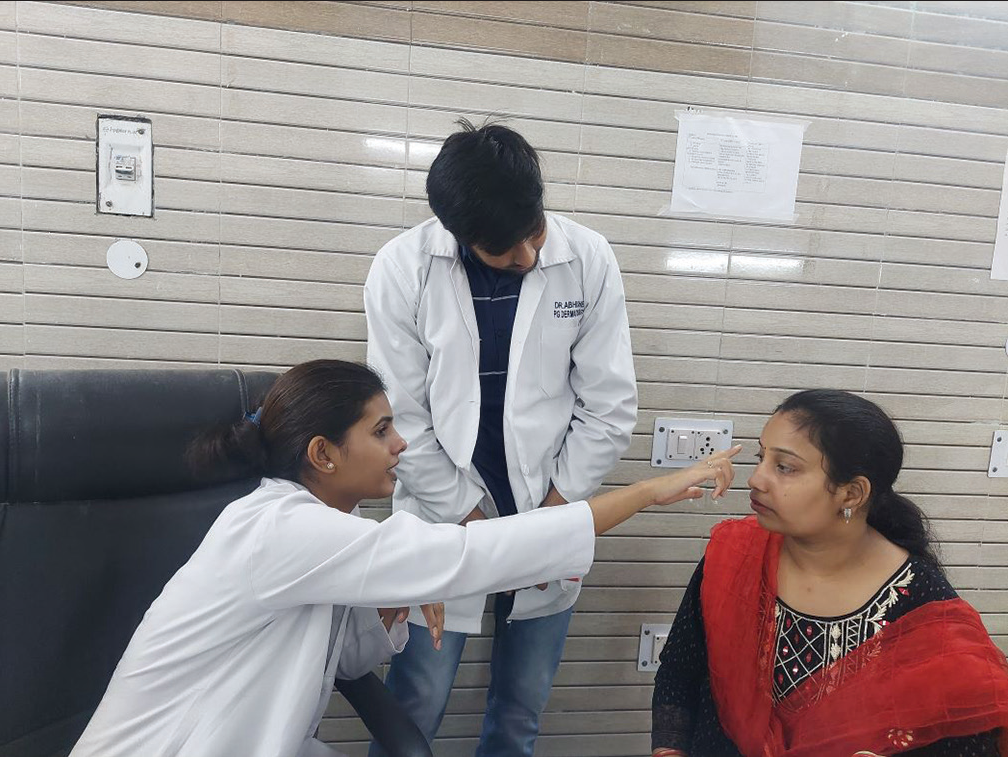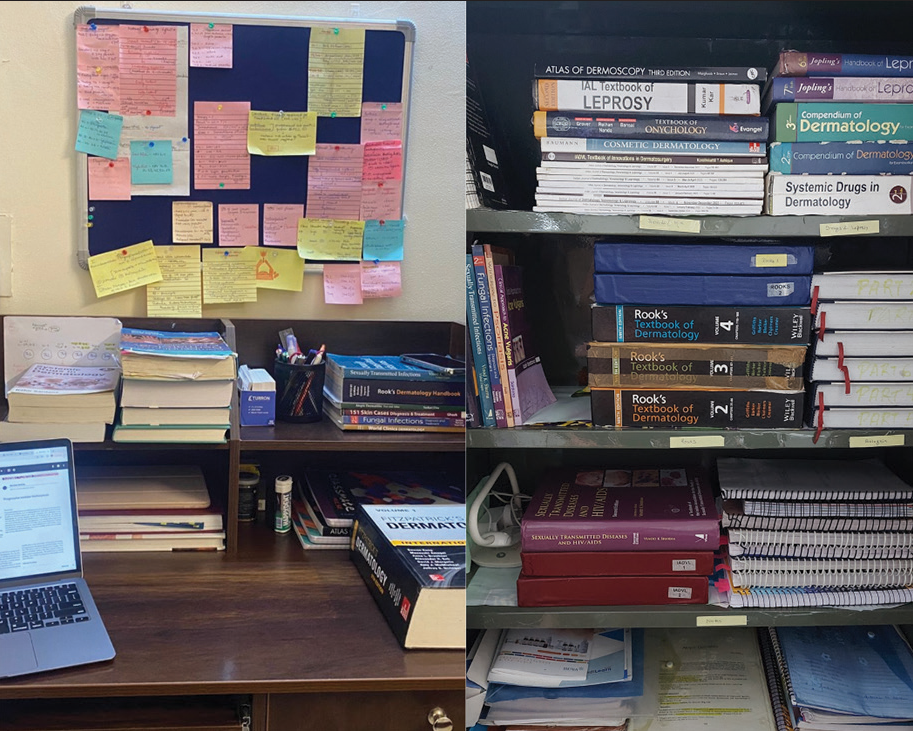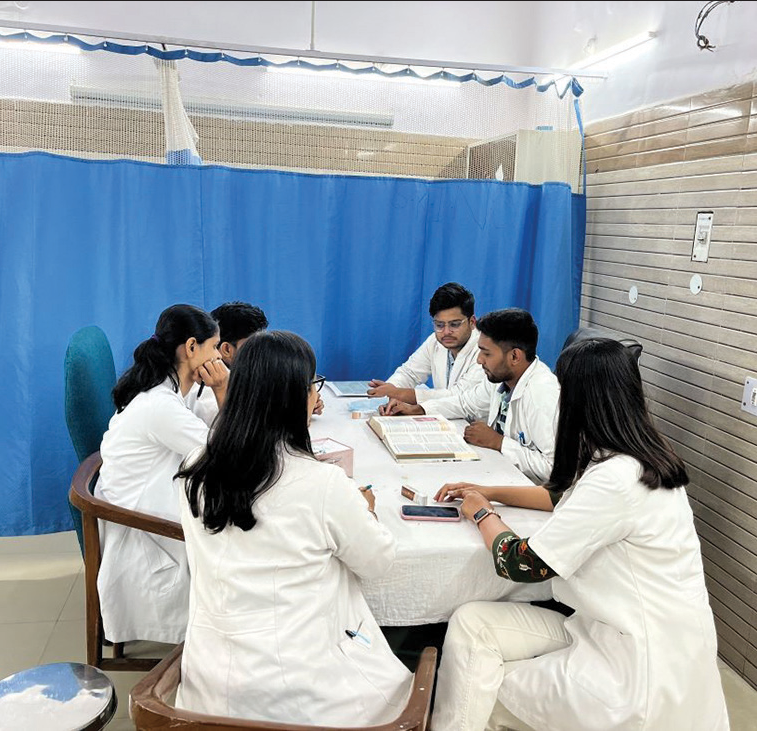Translate this page into:
Residents Forum: Cruising Through the Final Barrier…
*Corresponding author: Kumari Ritu, Department of Dermatology, Atal Bihari Vajpayee Institute of Medical Sciences and Dr. Ram Manohar Lohia Hospital, New Delhi, India. ritu64026@gmail.com
-
Received: ,
Accepted: ,
How to cite this article: Ritu K, Bhogar K. Residents Forum: Cruising Through the Final Barrier… Indian J Postgrad Dermatol 2023;1:90-2.
Abstract
The postgraduate final year exam is another milestone set to adorn the degree of a qualified resident. Covering the vast syllabus during residency can be a tough challenge. Thoughtful strategy and well-planned tactics pave the way for a successful outcome. This article aims to provide a few guiding points for the last-minute preparation to ace the final barrier.
Keywords
Residency
Exams
Dermatology
Postgraduate
Preparation
The ‘3-year residency’, a game changing but equally arduous phase of one’s life, ends with a university examination. It is not just the culmination of years of hard work, rather is the start of a new one. A path that defines the speciality for the rest of one’s life.
As the saying goes, ‘Success is not about reaching the destination, but who we become during the journey’. Therefore, one’s goal must not be bound to the confines of the examination, but to be a proficient dermatologist.
PREPARING FOR THE STORM
The initial, relatively jolly phase of 2 years of residency should be utilised to prepare a stronger keel for one’s boat to face the final hurdle. Regular reading, active learning, well-organised study material and concise notes, regular case, and spotter presentation during the 2-year tenure help one cover the vast expanse of the syllabus effortlessly. In many cases, the slumber breaks off as the D-day comes calling. However, one does not have to be good to start, one just has to start, to be good. Smart planning, discipline, and senior’s guidance will ease up this daunting task.
THE BEGINNING
Focused preparation must start at least 6 months before examinations. 1st step towards it would be getting oneself acquainted with examination pattern [Table 1]. The immediate seniors serve as a treasure trove of information in this regard. Fruitful interaction with them helps one learn the tricks of trade. A comprehensive list of important spotters, long and short cases, previous 5-year questions must be obtained. While the practical aspect of examination must be covered during the 9–4 outpatient department (OPD) hours, a good 4–6 h of reading per day needs to be dedicated to theory.
| Theory | Paper 1: Basic science as applied to dermatology, STD and leprosy Paper 2: Dermatology Paper 3: STD and leprosy Paper 4: Recent advances in the field of dermatology, applied sciences pertaining to skin/STDs and internal medicine and skin |
| Practical | 10 spotters (number can vary) 1 long case 2 short cases: STD and leprosy Viva (X-ray, histopathology, drugs, and instruments) Thesis |
STD: Sexually transmitted diseases
The aim from this point onwards should be to present spotters daily, one long case and a short case per week to faculty. Spotters are given special emphasis during the exams. Hence, the residents must do the same. Cases must be examined properly with relevant differentials in mind [Figure 1]. Any shortcut or lack of rigour on this part might reflect poorly on the D-day. Non-hesitant approach towards doubts clarification during this time saves one from last minute jeopardy. A well-maintained note-book of important questions raised during viva aids in last minute precision study. Preparing for weekly ward rounds and facing them is a perfect simulation of what one might encounter during the exam.

- A postgraduate resident presenting a case as spotter to a senior resident.
A logbook of previous 5-year diplomate of national board (DNB) and university examinations questions gives an idea of the important topics and frequently asked questions. Before examinations, one must aim for at least 3 rounds of revision with special emphasis on frequently asked topics. A well-prepared realistic timeline will act as a guide map to the preparation and even boost confidence in achieving short set piece goals, augmenting further preparation. Organised study space creates a microsphere to study [Figure 2]. It is helpful to stick to one book or source for a particular topic, decluttering the preparation. Assortment of good quality presentations and concise self-made notes during this period will make later revisions easier. Reading about a disease or a topic daily and discussing it with peers makes an otherwise daunting task of completing the vast syllabus seemingly easy, preventing last moment jitters [Figure 3].

- An organised study space and material sets the mood to study.

- Discussion and interaction among peers help in covering various topics in a short time while also building a long-lasting memory.
Sent-up examinations help to gauge one’s preparation while also providing simulation for exams. Any lacunae in knowledge can be brought out during this time which can be addressed before university examination. Careful scrutiny of one’s answer sheet under experienced faculty and working on their valuable feedback will help one cover all bases.
STILLNESS BEFORE THE STORM
Preparatory leave of about 15–20 days before examinations must be dedicated entirely to the revision of previously read topics. Diving into new areas, or previously uncovered topics, unless important, depreciates the confidence. Sent-up papers from other colleges under the same university must also be covered. The proverbial saying ‘All work and no play makes Jack a dull boy’ stands true here. A leisurely stroll or brief breaks in between study hours aids in unnerving the situation.
THE FINAL HURDLE
Theory examination marks the commencement of the final hurdle. It consists of four papers with a day’s gap between each paper. The time is just sufficient to glance through previously read topics (most recent, frequently asked questions, sent up examination topics, hot topics) and not delve into new arenas. Self-made concise notes and organised study material comes in handy during this time. Beating the pre-performance nerve is of utmost importance during this phase. An extra hour of preparation might not add to marks but even a minute of extra sleep and peace of mind will go a long way in ensuring success. Hence, get a good night’s sleep, proper breakfast, and be on time.
The final phase is the Practical Examination. It is a reflection of clinical skills and knowledge acquired during residency. Repeated presentations of cases and spotters during a 3-year tenure ensures a smooth glide through this phase. Attending revision classes arranged by the faculty before the examination will give one the most bang for the buck. A well-groomed look and complete examination kit might not add to the marks but certainly creates an impression. On the day of practical exams, it is essential to keep sane and give relevant differentials based on one’s assessment and not here-say. Learning the tricks of viva is not a day’s job but is mastered during regular courses. Hence, sacrificing the previous night’s sleep or popping sedatives does only harm and no good.
CONCLUSION
Preparation for examinations is as much an art as it is science, keeping your calm, managing your time well, being thorough with your presentation skills, and regular revision is the ultimate key to success.
Snippets of the article [Table 2].
| • Regular reading |
| • Be consistent |
| • Prepare a question bank of the last 5-year questions |
| • Organise your study material and study space |
| • Make concise notes |
| • Realistic, easy to follow time-table |
| • Present cases and spotter |
| • Multiple revision |
| • Clear your doubts |
| • Stay calm and be confident |
Declaration of patient consent
Patient’s consent not required as there are no patients in this study.
Conflicts of interest
There are no conflicts of interest.
Use of artificial intelligence (AI)-assisted technology for manuscript preparation
The author(s) confirms that there was no use of artificial intelligence (AI)-assisted technology for assisting in the writing or editing of the manuscript and no images were manipulated using AI.
Financial support and sponsorship
Nil.







